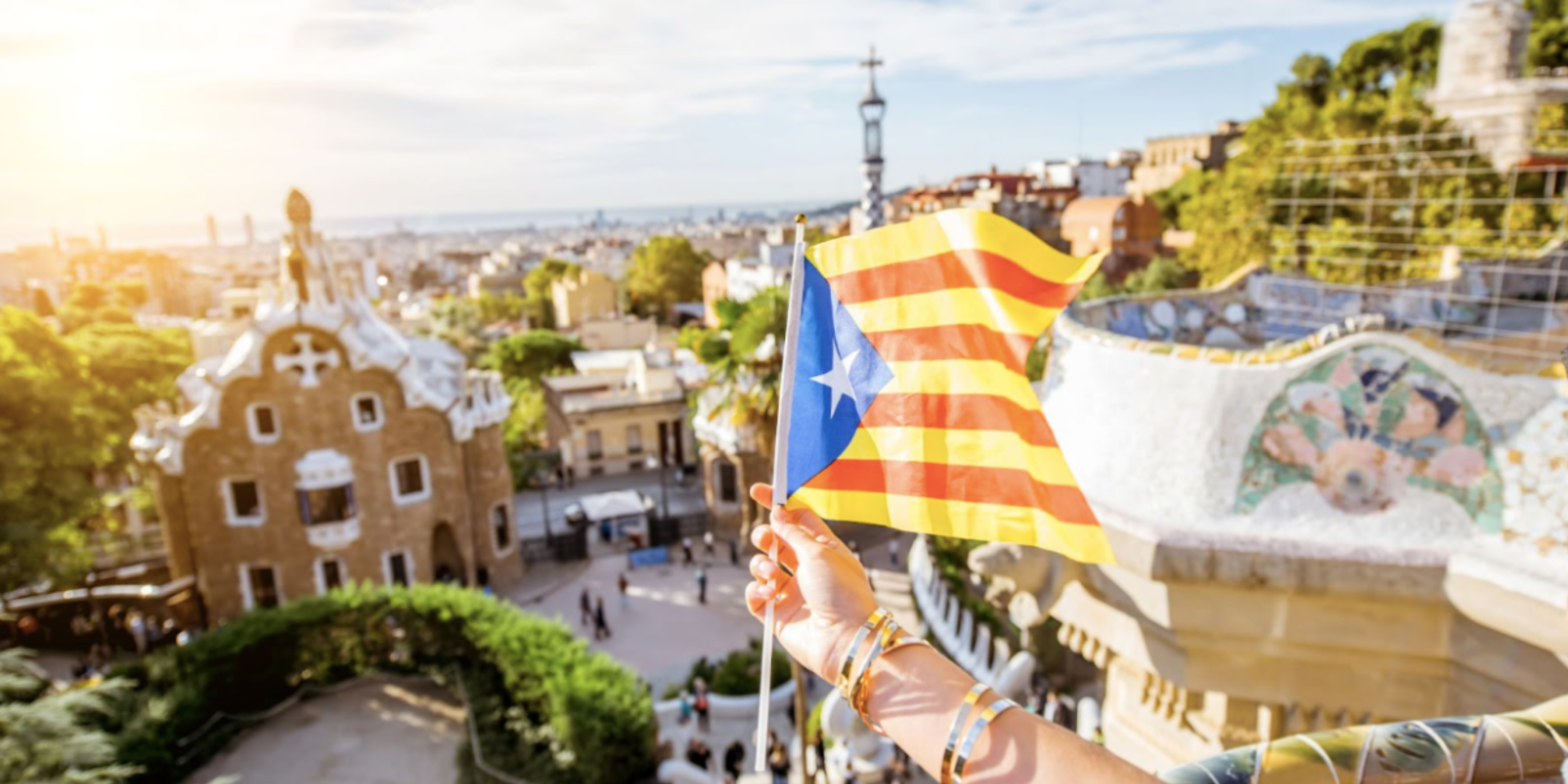Catalans Assembled: The story of a grassroots struggle for independence
August 3, 2022 — LAURA BUCHER
Walking on the streets of Barcelona: you will find many Catalonian flags hanging on the balconies, transmitting the feeling of an ongoing separatist sentiment in the country. Catalonia has a long history of fighting for independence. After being ruled by the Roman and the Frankish Empire, Catalonia became part of a unified Spain, under the Crown of Aragon. During the Roman Empire, Catalan language developed independently from Spanish. Although Catalonia maintained its own institutions at first, it was gradually integrated into the Spanish state, which induced the surge of separatists movements starting in the 19th century.
When Spain became a republic in 1931, Catalonia was granted semi-autonomous status under the Esquerra Republicana party, and the autonomous government of Catalonia, named Generalitat, was established.
Despite Catalonia being on the frontline of the Spanish Civil War between 1936 and 1939, the victory of Francisco Franco marked the loss of Catalonian autonomy, the restriction of the Catalan language, and the suppression of its culture.
“The Catalan pro-independence movement has been for so long, for centuries. Our message to you and the readers is that this is no a recent event”
After Franco’s death in 1975 and the rise of democracy, full autonomy was granted to Catalonia, with the establishment of the autonomous community of Catalonia. Nationalist sentiment was sparked when the Spanish Supreme Court in 2010 overturned the Status of Autonomy that was granted in 2006. From that point, two independence referendums were held by the regional government, in 2014 and 2017, respectively. However, both of them were called to be illegal by the Spanish Government. Specifically, in September 2017, the Catalan Parliament approved a law and called the referendum the 1st of October. In turn, the Spanish Constitutional’s Court declared the referendum unconstitutional, arresting local officials and seizing ballots and election materials. Thousands of members of the Spanish Police force were deployed by the Central Government to prevent the Catalans from voting, and were accused of employing violence against unarmed civilians, causing much polarisation and tension in society. The turnout of the referendum was 43%, with the ‘Yes’ of Independence winning with 90%.
But after that turbulent week and massive international media attention, Catalonian news slowly disappeared from the public debate. And it was for this reason that we wanted to learn more about what the current state of the country is.
“We have performed a good amount of different campaigns. The most well known is the demonstration in September 11, which is the Catalan Nacional Day, in which we remember the fall of Barcelona in 1714, and the outcome was the Catalans people losing their freedom, their constitution, their laws, and Catalan language being forbidden, and many other repressive laws applied here in Catalonia”
We reached out to Assemblea Nacional Catalana, a grassroot organisation of more than 100.000 people, with the common goal of reaching independence in a democratic and peaceful way. We spoke with Sergi Duran, one of the Assemblea’s representatives, who shared his experience with us regarding the origins of the Assemblea and their causes and struggles to reach independence in Catalonia.
Watch our video interview with Sergi Duran below.
But what is the current conflict state in the country?
One of the consequences of the referendum was the exile of the former president of Catalonia, Carles Puigdemont. In 2019, the Spanish Supreme Court condemned nine Catalan politicians to jail for up to 13 years, for having held a banned referendum. It sparked a wave of violent protests in the region. However, the separatist leaders were recently released by the Spanish Government, with the aim of mitigating tensions between Madrid and Catalans secessionists.
“We hope that us, as the Catalan National Assembly, or political parties in Catalonia that defend independence addressing international organisation such the European Union, can help us to find a way to solve this political problem, to avoid just facing repression [..], but to set political solutions for political problems”
The new Catalan President, Pere Aragones, leader of the pro-independence Catalan Republican Left party, stated that ‘the best way to achieve (independence) is through dialogue, negotiation and agreement’ with the Central Government. Aragones is committed to working on a new legal referendum - this time with Madrid’s approval. Arancha Gonzáles Laya, Spain’s Foreign minister said that ‘there has been an advance of those who are more inclined for a dialogue with the government’. As of today, Catal separatist parties are putting their efforts into reaching a negotiation with Madrid, in the hopes of obtaining a referendum in a democratic way. They also believe that the European Union could be the bridging institution to support this negotiation. Catalans still have a long way to go to achieve their independence, but they remain strong, ambitious, and constantly hopeful that they will get there one day.
If you are interested in hearing further information about the history of Catalan separatist movement, you can watch the full video interview here.
The content of this website represents the views of the author only and is his/her sole responsibility. The European Commission does not accept any responsibility for use that may be made of the information it contains.


